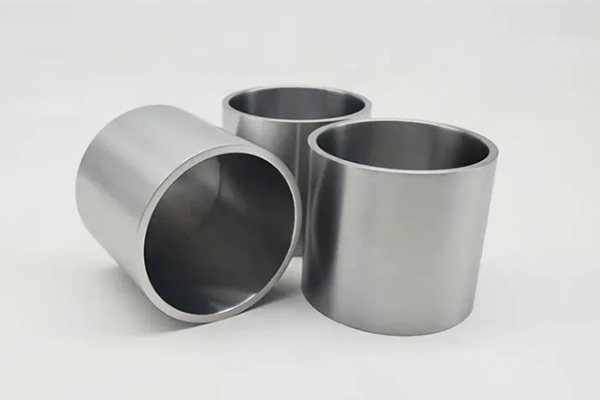8 Tips for Storage and Protection of High-Purity Optical Materials
High-purity optical materials, such as laser crystals, fluoride substrates, hygroscopic halides, and precision-coated optics, are essential in high-performance optical systems. Their optical quality, surface integrity, and long-term stability can be easily compromised if they are subjected to contamination, moisture, temperature fluctuations, or improper handling.
Careful storage and protection methods are crucial for preserving the lifetime and performance of such sensitive components.
1. Maintaining an Appropriate Storage Atmosphere
A clean, controlled environment is the cornerstone of optical-material care. High-purity optics are ideally stored in a Class 100 cleanroom or better, where airborne particulate levels are minimised and the risk of surface contamination is dramatically reduced. Maintaining humidity below 40% relative humidity is especially important for hygroscopic materials such as CaF₂, MgF₂, ZnSe, KBr, and other halide crystals, which readily absorb moisture from the atmosphere. Low, stable humidity prevents clouding, surface hydration, and micro-cracking, while a stable temperature range of 20–25°C helps avoid thermal stress that can distort substrates or damage coatings.
2. Preventing Contamination
Contamination control begins well before optics reach long-term storage. Many optical surfaces - particularly first-surface mirrors, holographic gratings, thin pellicle beamsplitters, and unprotected coatings - are highly sensitive to both physical contact and chemical exposure. Touching an optical surface with bare skin can introduce oils which permanently degrade reflectivity or transmission. For this reason, high-purity optics should always be handled using powder-free nitrile or latex gloves, cleanroom garments, and - when possible - vacuum tweezers. Contact should be limited to non-optical edges, and delicate surfaces should be engaged only when absolutely necessary.
To protect optics from particulate and chemical contamination during storage, optics should be placed in cleanroom-grade packaging, such as anti-static pouches, sealed bags, or nitrogen-purged enclosures. This will protect them not only from dust and airborne organics but also from corrosive vapours, solvents, and acids that may etch or fog their surfaces. Nitrogen or argon purging is often recommended with ultra-high-purity crystals, such as laser-grade YAG or nonlinear optical crystals, in order to maintain an oxygen-free, low-moisture environment that minimises colour-centre formation.
3. Protective Packaging Methods
Effective packaging provides both environmental isolation and mechanical protection. Hermetic containers or vacuum-sealed bags with integrated desiccants have been used to maintain long-term dryness, particularly for moisture-sensitive materials. The optics should be cushioned inside the package by using acid-free foam or non-abrasive liners that avoid scratching or chipping.
Specialised requirements, such as for hygroscopic salts, might necessitate double-layer sealing or rigid containers packed with desiccants to prevent moisture from entering during transit or through long periods of storage. Materials featuring high laser-damage-threshold coatings should be kept away from organic vapours or plasticisers, which deposit residues over time and cause laser-induced damage under high fluence.
4. Light and Radiation Shielding
Some optical materials degrade with excessive light exposure, particularly in the ultraviolet region. Halide crystals, along with other reactive substrates, are best stored in opaque or amber-tinted storage containers to block UV radiation. High-purity optical materials should also be stored far away from any sources of ionising radiation, including X-ray equipment. Ionising radiation can introduce colour centres in crystals—including NaCl, KCl, and various alkali halides—which alters their transmission characteristics.
5. Minimising Risk before and after Storage
Proper handling is key to minimising the need for frequent cleaning. In accordance with established optics-care recommendations, optics should always be unpacked in a clean, temperature-controlled environment and never set directly on hard surfaces. Even a single small abrasive particle can scratch precision surfaces if pressed between a lens and a workbench. When examination does become necessary, magnifiers or loupes are useful for locating contaminants or defects while bright, grazing-angle illumination enhances surface scatter, scratches, or particulate deposits.
Temperature equilibration is most critical when an optic is transported from a cold to a warm environment. Sudden changes in temperature can lead to condensation on the optical surface, which can cause staining or micro-damage of that surface. Allowing the optic and its package to reach thermal equilibrium eliminates this potential.
6. Long-Term Storage and Monitoring
Long-term storage requires periodic checks. Even well-protected optics will, over time, suffer from effects related to humidity, outgassing, or coating ageing. Periodic checks can be made for the first signs of clouding, crystallisation, coating delamination, or particulate deposition. Many facilities operate on a First-In-First-Out system to prevent optics from remaining in storage for too long. Labelling practices can help in maintaining a record of the history and stability of each piece: date received, purity level, storage conditions.
7. Special Storage Cases
Extra precautions are necessary when working with certain optical materials. Hygroscopic crystals like KBr or ZnSe need to be stored in either a dry nitrogen environment or in packaging that contains activated desiccants. Highly sensitive coatings of high-power laser systems should be completely protected from volatile organic compounds, as they may migrate onto surfaces and lower laser-damage thresholds. Thin or fragile optics—such as ultra-thin filters or delicate gratings—should never be directly handled; instead, tweezers, specialised fixtures, or vacuum pickup tools are required.
8. Emergency Responses
If contamination or spills occur, the optics that are affected should be immediately quarantined to avoid cross-contamination. Recovery methods, depending on the material, will include controlled solvent cleaning, re-baking, or occasionally even re-polishing in more extreme circumstances. Moisture damage to hygroscopic materials may necessitate reconditioning; in severe exposure, surface quality may be irreversibly altered.
For more details, you can visit Stanford Advanced Materials (SAM).
Frequently Asked Questions
Which are the most important environmental factors of storage of optical materials?
Temperatures that remain stable and low humidity are extremely important in preventing condensation, surface stress, and moisture-related degradation.
How does handling influence material quality?
Poor handling introduces fingerprints, dust, and micro-scratches, any of which can degrade optical performance.
Why are cleanroom conditions recommended?
Cleanrooms greatly reduce particulate contamination, which is critical to maintaining pristine optical surfaces.
What are the best packaging options for optical materials?
Anti-static, dust-proof or hermetically sealed containers with soft liners and desiccants offer ideal protection.
How often should stored optics be cleaned?
Cleaning frequency is dependent on the conditions of storage or material sensitivity. Cleaning should be guided by inspection.

 Bars
Bars
 Beads & Spheres
Beads & Spheres
 Bolts & Nuts
Bolts & Nuts
 Crucibles
Crucibles
 Discs
Discs
 Fibers & Fabrics
Fibers & Fabrics
 Films
Films
 Flake
Flake
 Foams
Foams
 Foil
Foil
 Granules
Granules
 Honeycombs
Honeycombs
 Ink
Ink
 Laminate
Laminate
 Lumps
Lumps
 Meshes
Meshes
 Metallised Film
Metallised Film
 Plate
Plate
 Powders
Powders
 Rod
Rod
 Sheets
Sheets
 Single Crystals
Single Crystals
 Sputtering Target
Sputtering Target
 Tubes
Tubes
 Washer
Washer
 Wires
Wires
 Converters & Calculators
Converters & Calculators
 Write for Us
Write for Us





 Chin Trento
Chin Trento



